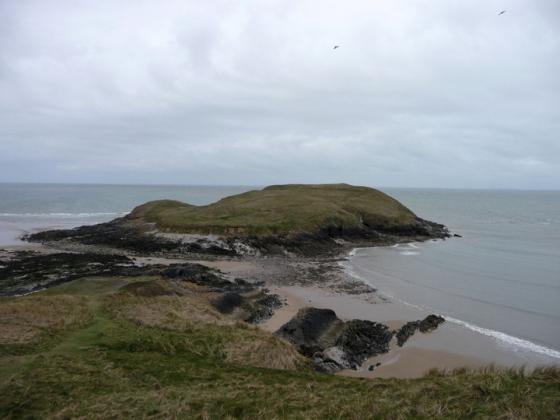The day had started off grey and full of drizzle, the drive down here had been one of concerned skyward glances, but there was no need, this isn’t the north where it’s purportedly “grim”, this is the south, the deep south, almost as far south as you can go without going to England, and you don’t want that.
The sun had shone all day long, which had gone a long way to salve my failed attempt at Paviland cave, but it had done nothing to boost my spirits after the abominable hedges of Samson’s Jack, I decided that sunset at a burial chamber was what the day needed to finish it off.
Maen Ceti won out over the Swaynes Howe chambers, it’s much less of a walk and with a teenager in tow who’s moods swing further apart than heaven and hell, it was an easy decision, there’s always tomorrow, after a zoo and the cave part two maybe.
I parked in the moonscape car park south of the big stone, some people were in front of us so we gave them a few minutes head start before starting our preamble across the moor, as per the new stone visiting rule book.
Standing beside the Maen Ceti is a belittling experience, it’s like, really big, big enough to be mentioned in the same breath as Silbury and Stonehenge, but it was once bigger, in many pictures you can see the two large pieces that came off one side, when they broke off the whole rock lost its equilibrium and shifted slightly on it’s orthostats. The orthostats number is nine and they section off the under side of the stone into two chambers, which is now partly exposed due to the broken capstone. Causes of the broken stone range from ice acting in a crack, lightning and struck by a saint with a sword, or all three.
Standing on top you can see the Great cairn.
The underside of the Arthur’s stone usually has a puddle underneath it, it’s usual enough for some to have called it a spring, doubtful as its all dry right now, so I squat like a frog and waddle round under it reveling in it’s dryness.
The site was just as I remembered it, no smaller no bigger, it’s the right colour and the right distance from the road, but what I couldn’t appreciate from my other time here was the view to the sea west and north, it was all hidden by a thin mist, but its lovely and clear right now, which is nice, I wonder if it’ll last til tomorrow.



















































